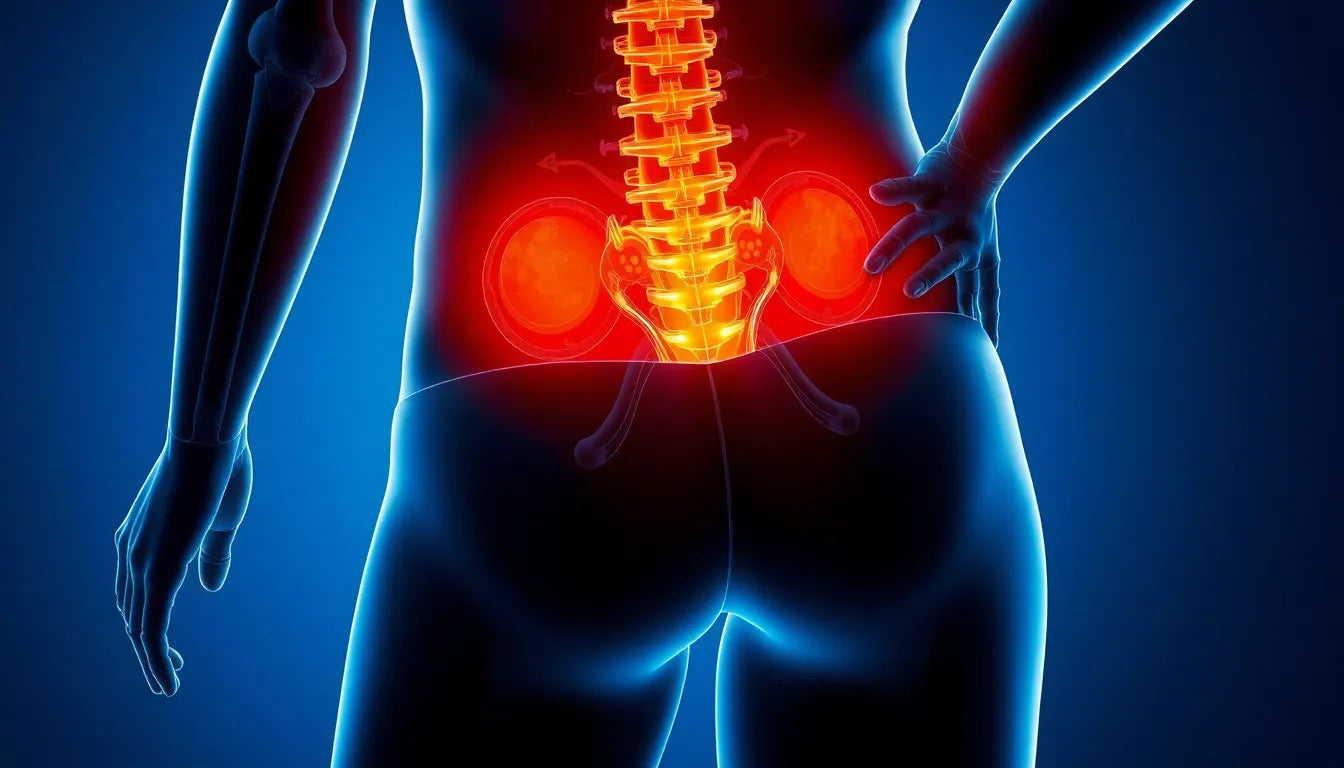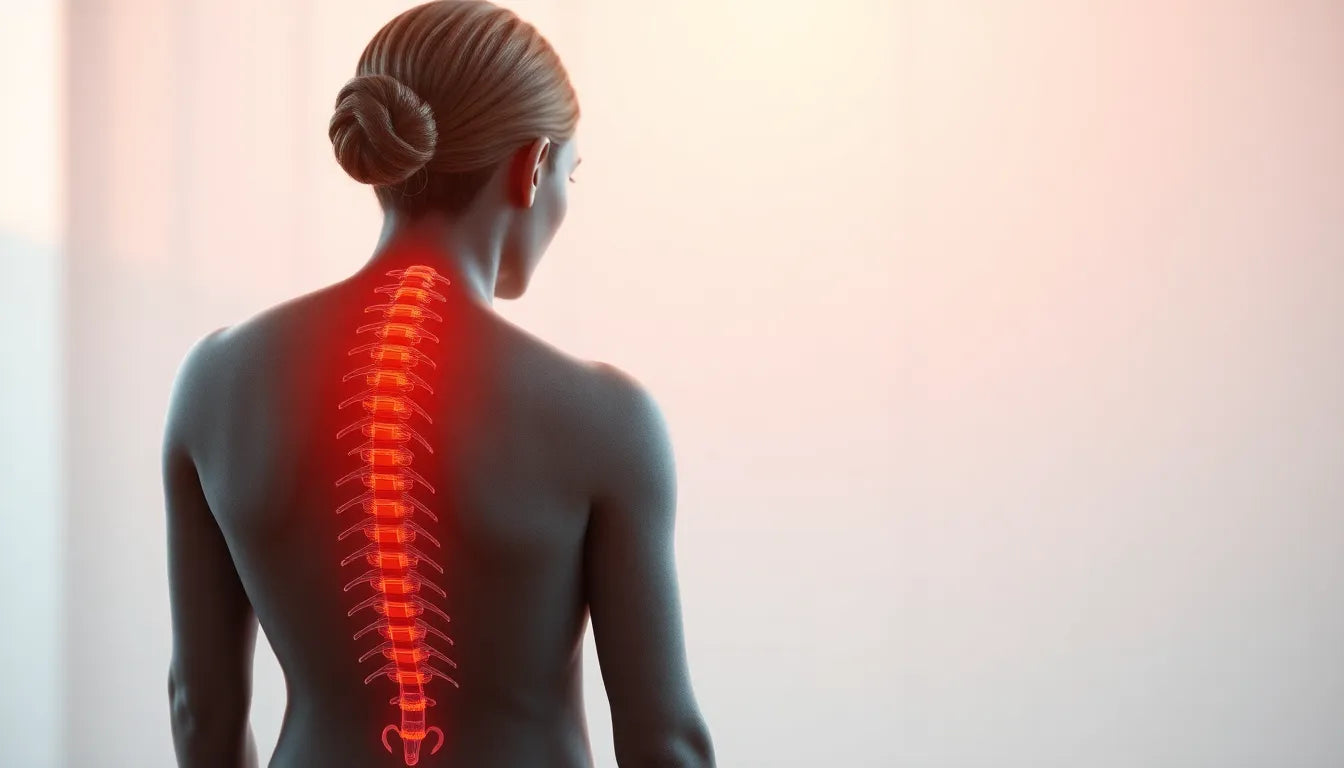A herniated disc spine is a common condition that affects many individuals, often leading to discomfort and mobility challenges. It occurs when the soft, gel-like center of a spinal disc pushes through a tear in its tougher outer layer. This protrusion can compress nearby nerves, resulting in symptoms such as pain, numbness, or weakness, particularly in the back or legs. Understanding this condition is crucial for managing its impact on daily life.
Understanding the prevalence and impact of herniated discs
Herniated discs are more common than one might think, affecting a significant portion of the population at some point in their lives. They can occur in any part of the spine but are most often found in the lower back. This prevalence underscores the need for awareness and effective management strategies. The impact of a herniated disc on daily life can be profound, leading to difficulties in performing everyday tasks, reduced mobility, and the potential for chronic pain if not properly addressed. These challenges highlight the importance of seeking appropriate treatment and adopting lifestyle changes to alleviate symptoms and improve quality of life.
Purpose of this article
This article aims to provide comprehensive guidance on managing a herniated disc spine, offering insights into both nonsurgical and surgical treatment options. By exploring various approaches, individuals can make informed decisions about their care, tailoring treatment plans to their specific needs and circumstances. Whether through lifestyle modifications, physical therapy, or medical interventions, the goal is to empower readers with the knowledge needed to find relief and regain control over their lives. As we delve into the different strategies available, it's important to remember that each person's journey with a herniated disc is unique, and personalized care is essential for effective management.
Exploring nonsurgical treatment options
When managing a herniated disc spine, nonsurgical treatments are often the first line of defense. These methods aim to alleviate pain and improve mobility without the need for invasive procedures. Understanding and implementing these strategies can significantly enhance a patient's quality of life.
Rest and regulated activity
One of the foundational strategies in managing a herniated disc is balancing rest with regulated activity. Complete bedrest is generally discouraged, as it can lead to muscle weakness and joint stiffness. Instead, short periods of rest combined with gentle activity can help maintain muscle tone and support spinal health. Activities such as walking or swimming can be beneficial, as they promote circulation and reduce pressure on the spine.

Lumbar support belt
Provides adjustable lower back support and relief for herniated discs and pain.
Medications
Medications play a crucial role in managing the pain associated with a herniated disc. Nonsteroidal anti-inflammatory drugs (NSAIDs) like ibuprofen or naproxen are commonly used to reduce inflammation and relieve mild-to-moderate pain. For those experiencing severe discomfort, muscle relaxants and prescription pain relievers may be recommended under a healthcare provider's guidance. These medications can help manage symptoms, allowing for greater participation in physical therapy and daily activities.
Epidural steroid injections
For individuals with severe or persistent symptoms, epidural steroid injections may offer significant relief. These injections deliver steroids directly to the area around the herniated disc, reducing inflammation and alleviating pain. This targeted approach can be particularly effective for those who have not responded to oral medications or physical therapy alone.
Physical therapy
Physical therapy is a cornerstone of nonsurgical management for a herniated disc spine. Therapists use a variety of modalities to help patients regain strength and flexibility. Techniques such as stretching, gentle massage, ice/heat therapy, and ultrasound can reduce pain and promote healing. Additionally, exercise programs designed to strengthen the muscles supporting the spine can enhance stability and prevent future injuries. A tailored physical therapy plan can significantly improve outcomes for individuals with a herniated disc.

Men's Posture Shirt™ - Black
Patented Posture Shirt™ helps activate muscles, relieve pain, and improve posture.
Alternative therapies
In recent years, alternative therapies have gained popularity as adjunct treatments for herniated discs. Acupuncture, for instance, may provide pain relief by stimulating specific points on the body to promote healing and reduce discomfort. Chiropractic care, which involves spinal adjustments, can also help alleviate pressure on nerves and improve spinal alignment. While these therapies may not be suitable for everyone, they offer additional options for those seeking comprehensive care.
Minimally invasive and surgical treatments
When nonsurgical methods do not provide sufficient relief, minimally invasive and surgical treatments may be considered. These procedures aim to address the root cause of the symptoms, offering more permanent solutions for those with severe or persistent issues.
Microdiscectomy
Microdiscectomy is a minimally invasive surgical procedure often considered the gold standard for treating herniated discs that do not respond to conservative care. During the procedure, a small portion of the disc material pressing on the nerve is removed, relieving pressure and alleviating pain. The success rates for microdiscectomy are high, and patients typically experience faster recovery times compared to more invasive surgeries.
Artificial disc replacement
For select patients, artificial disc replacement offers an alternative to spinal fusion. This procedure involves replacing the damaged disc with an artificial one, preserving spinal motion and flexibility. While not suitable for everyone, it can be an effective option for those seeking to maintain a more natural range of motion in the spine.
Spinal fusion
Spinal fusion is generally considered a last resort for individuals with severe or intractable pain. This procedure involves fusing two or more vertebrae together to stabilize the spine and reduce pain. While effective in alleviating symptoms, it does come with the trade-off of reduced spinal flexibility. Patients considering this option should discuss the potential benefits and limitations with their healthcare provider.
Prognosis and recovery
The prognosis for individuals with a herniated disc spine is generally favorable, with the majority of cases improving with nonsurgical management over a period of 3-4 months. However, some patients may require prolonged or escalated interventions to achieve optimal results. Recovery times vary depending on the severity of the condition, the chosen treatment method, and the individual's overall health. With a comprehensive and personalized approach to care, many individuals can find relief and return to their normal activities with minimal disruption.
Integrative approaches and individualized care
When addressing a herniated disc spine, a one-size-fits-all approach is rarely effective. Instead, individualized care plans that consider the patient's unique circumstances and health status are crucial. By tailoring treatments to specific needs, healthcare providers can enhance the effectiveness of both conventional and alternative therapies.
Integrative approaches are gaining traction as they combine traditional medical treatments with complementary therapies, offering a holistic path to recovery. This might include blending physical therapy with acupuncture or chiropractic care to maximize pain relief and improve mobility. Such comprehensive strategies can address multiple facets of the condition, supporting a more balanced recovery process.
Comparison of treatment options
Understanding the differences between nonsurgical and surgical treatments can help patients make informed decisions. Below is a summary of the key distinctions:
| Treatment Type | Benefits | Risks | Recovery Time |
|---|---|---|---|
| Nonsurgical | Less invasive, lower risk, and often effective for mild cases | May not fully resolve severe symptoms | Varies; typically 3-4 months |
| Microdiscectomy | High success rate, minimally invasive, faster recovery | Potential surgical risks, requires anesthesia | Few weeks to a month |
| Artificial Disc Replacement | Preserves motion, alternative to fusion | Not suitable for all patients, potential for implant issues | Several weeks to months |
| Spinal Fusion | Effective for severe pain, stabilizes spine | Loss of flexibility, longer recovery | Several months |
Patient stories and practical tips
Real-life experiences can provide valuable insights into managing a herniated disc spine. Many patients have found success by incorporating practical at-home strategies. For instance, using ergonomic aids like lumbar support cushions can alleviate pressure on the spine during daily activities. Additionally, alternating between heat and cold therapy can help manage pain and inflammation.
Targeted exercises, such as gentle stretching and core strengthening routines, are also beneficial. These exercises not only aid in recovery but also help prevent future injuries by enhancing spinal support. Patients are encouraged to work with their healthcare providers to develop a personalized exercise plan that suits their needs.
Frequently asked questions
What causes a herniated disc?
A herniated disc can result from various factors, including age-related wear and tear, injury, or lifestyle habits. As we age, spinal discs lose water content, making them less flexible and more prone to tearing or rupturing.
Can a herniated disc heal on its own?
Yes, many herniated discs can heal naturally over time with conservative management. Rest, physical therapy, and medications can support the healing process, allowing the body to repair the disc and alleviate symptoms.
What are the signs that I need surgery for a herniated disc?
Surgery may be necessary if you experience severe pain that doesn't improve with nonsurgical treatments, significant weakness, or loss of bladder or bowel control. These symptoms suggest nerve compression that requires surgical intervention.
How can lifestyle changes help manage a herniated disc?
Maintaining a healthy weight, practicing good posture, and engaging in regular exercise can significantly impact disc health. These lifestyle changes reduce strain on the spine, promote healing, and prevent further injury.
Are alternative therapies effective for herniated discs?
Alternative therapies like acupuncture and chiropractic care can be effective as complementary treatments. While they may not replace conventional medical treatments, they can provide additional pain relief and support overall recovery.
Kilder
- American Association of Neurological Surgeons. "Herniated Disc."
- Spine-Health. "Cervical Herniated Disc Symptoms and Treatment Options."
- American Academy of Orthopaedic Surgeons. "Herniated Disk in the Lower Back."
- NYU Langone Health. "Nonsurgical Treatments for Herniated Disc."
- WebMD. "Treatments for Herniated Disk."
- Medical News Today. "Herniated Disk: Causes, Symptoms, and Treatments."
- Cleveland Clinic. "Herniated Disk."
- Mayo Clinic. "Herniated Disk: Symptoms and Causes."
- YouTube. "Herniated Disc Treatment Options."


















